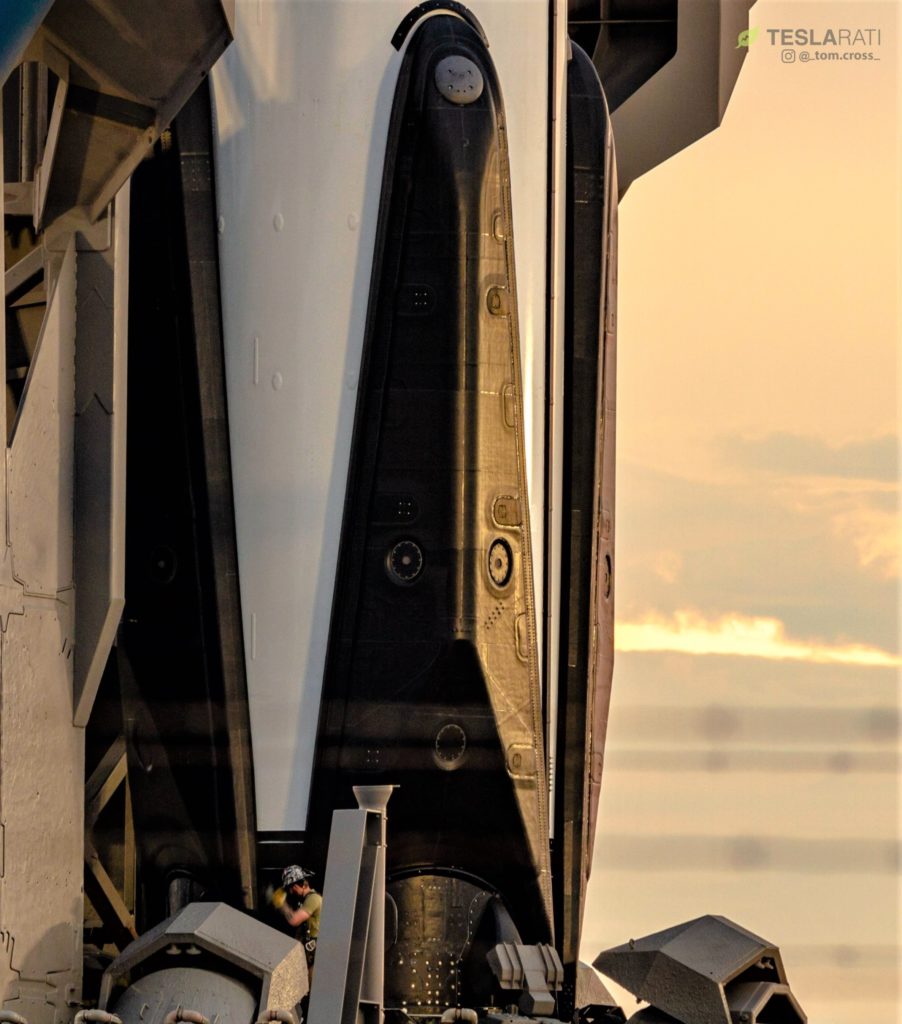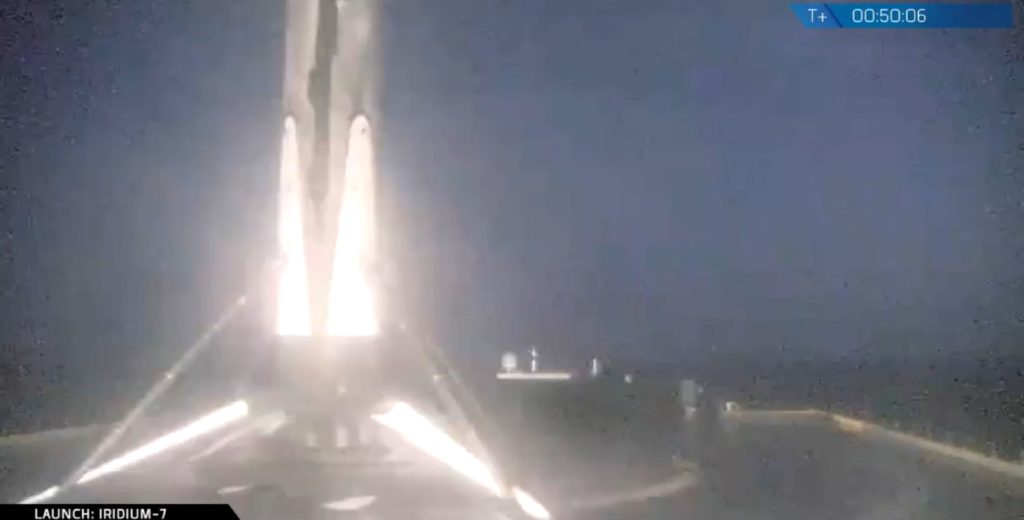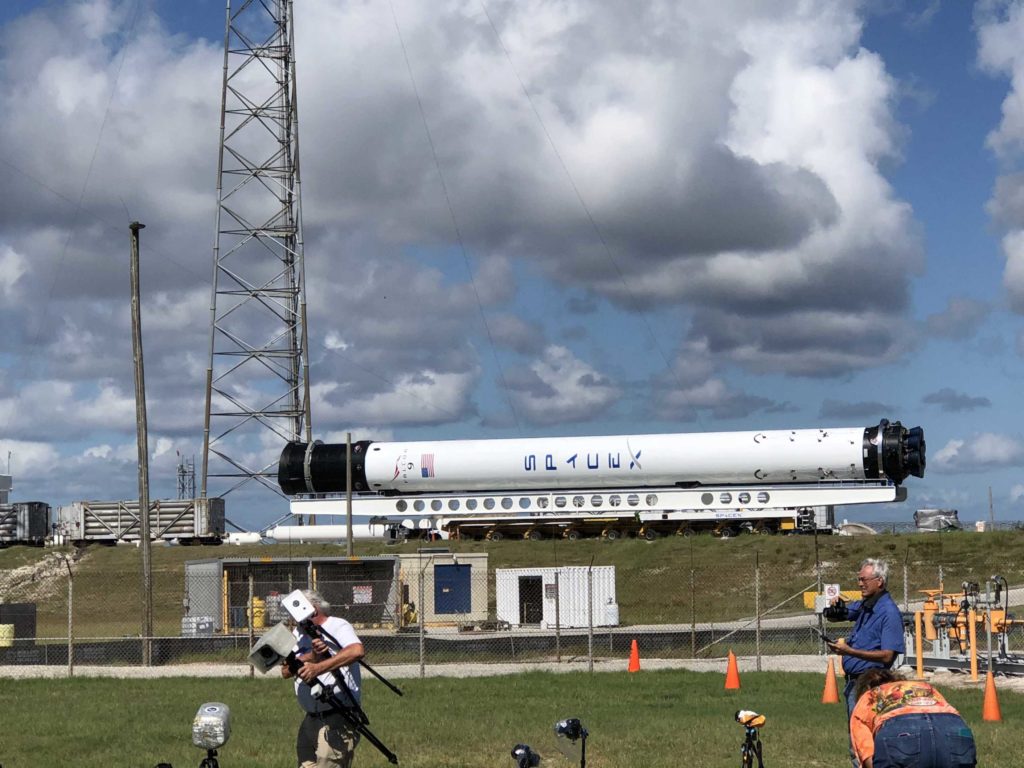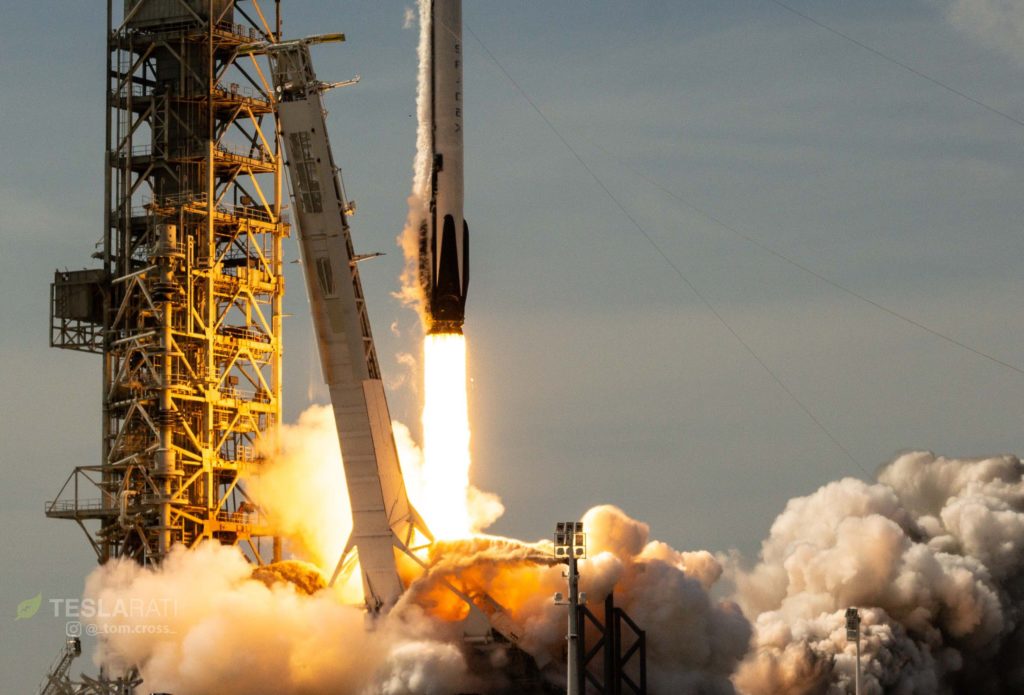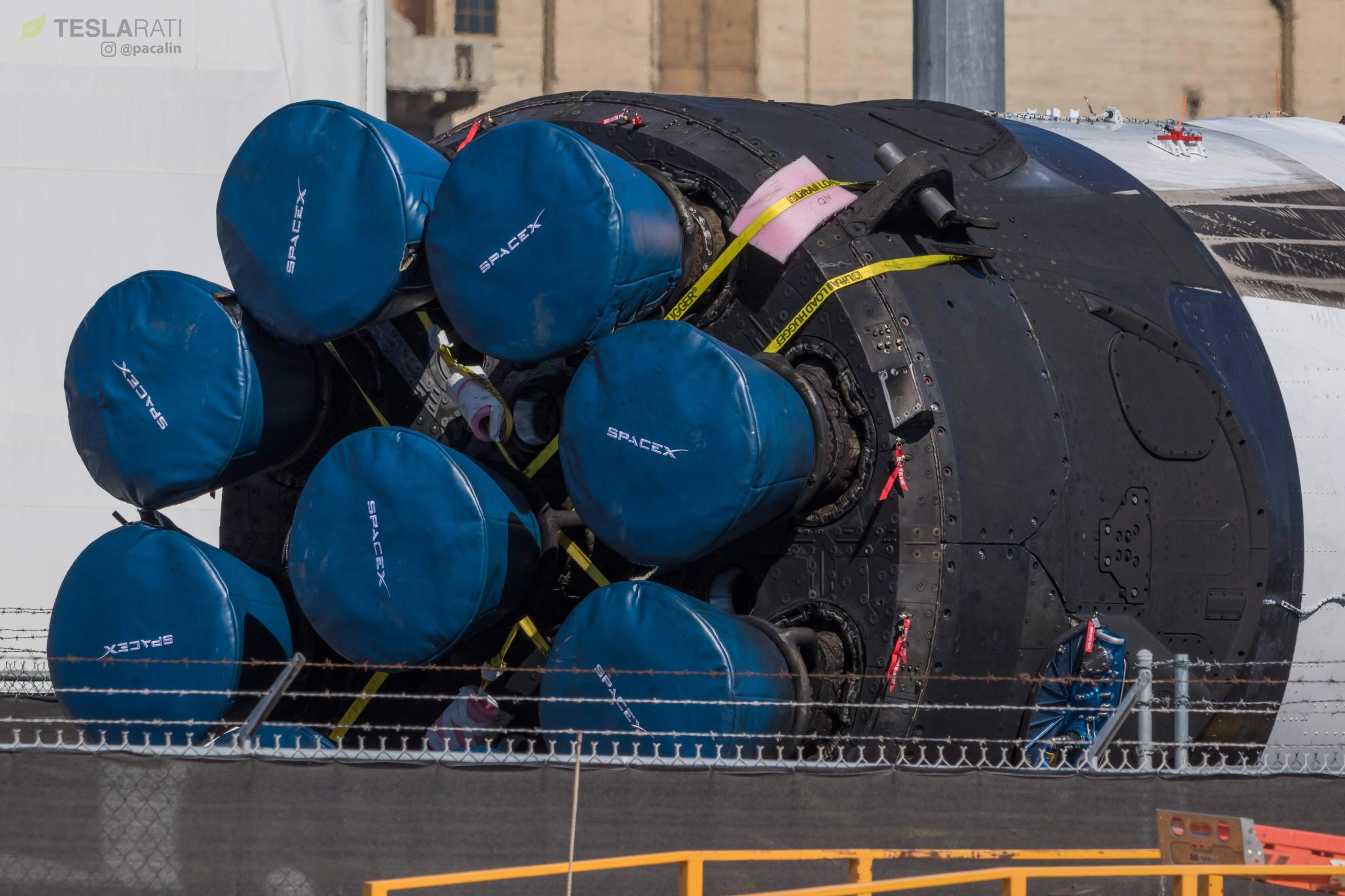
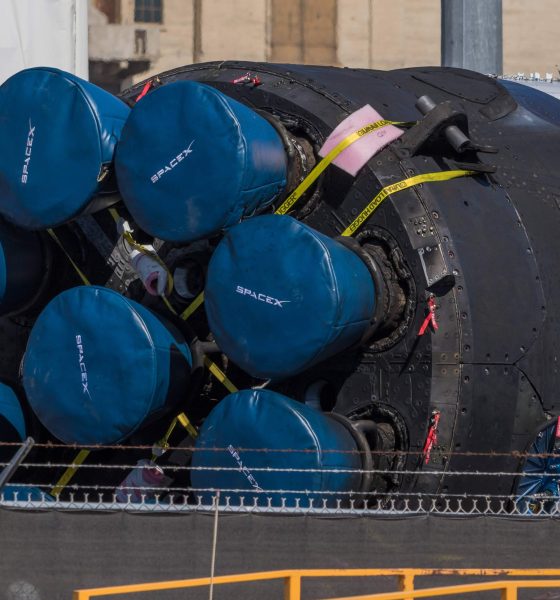
SpaceX
SpaceX test-fires Falcon 9 Block 5 booster for upgraded rocket’s fifth launch
After a couple of weeks of mysterious delays, SpaceX is once again back in the saddle for its next orbital mission and has successfully completed Falcon 9’s routine prelaunch wet dress rehearsal and static fire. This rocket will launch Telstar 19V’s (launched in July) sister communications satellite Telstar 18V to a high-energy transfer orbit at 11:28 PM EDT, September 8 (03:28 UTC, September 9).
SpaceX’s static fire testing – conducted once in Texas with just the first stage and once at the launch site with the upper stage attached – is very nearly identical to a real launch, save for the fact that the rocket is not allowed to actually lift off from the pad, and only ignites its main engines for a handful of seconds.
Static fire test of Falcon 9 complete—targeting September 8 launch of Telstar 18 VANTAGE from Pad 40 in Florida.
— SpaceX (@SpaceX) September 5, 2018
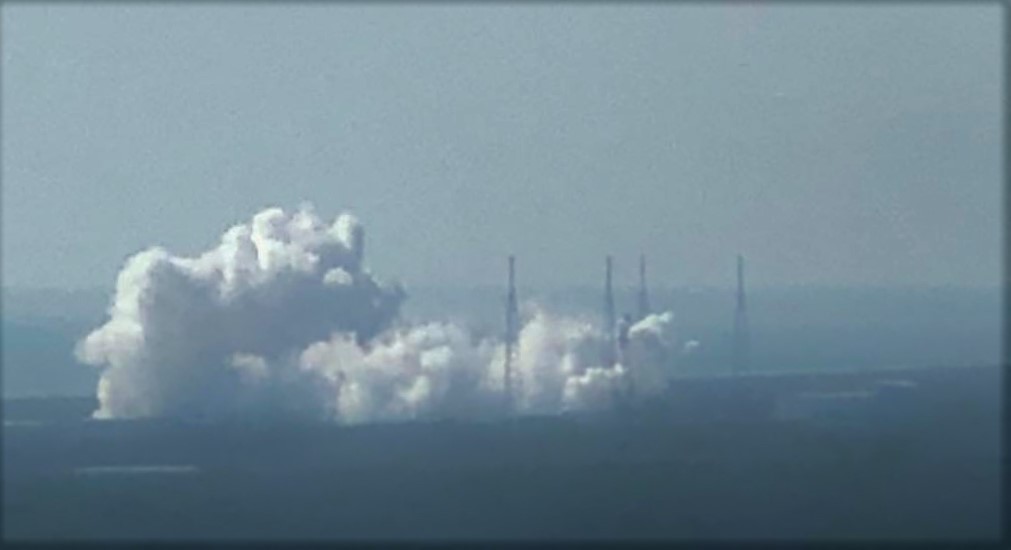
Almost entirely unique to SpaceX in the launch industry, Falcon 9 and Falcon Heavy are perhaps the only operational (orbital-class) rockets in the world to still conduct routine test fires of integrated segments, including both boosters, upper stages, and even Dragon spacecraft thrusters (both Crew and Cargo variants). Other launch providers like ULA, Arianespace, and Roscosmos will typically test engines individually, but that testing is often not even routine – spot checks more than anything systematic.
In fact, SpaceX’s system of hardware testing as extraordinarily extensive. Aside from test firing integrated boosters and upper stages, SpaceX doubles down on that testing both at the launch site and in Texas. Prior to integrated testing, essentially all rocket engines (sea-level Merlin 1Ds, vacuum Merlin 1Ds, SuperDraco thrusters, Draco thrusters, and Falcon’s cold gas maneuvering thrusters) are hot-fire (or cold-fire, in the case of the cold gas thrusters) tested in Texas after completing assembly in Hawthorne.
- The second Block 5 booster, B1047, debuted at LC-40 on July 21. (Tom Cross)
- Falcon 9 B1049 arrived at the launch pad just hours after the successful launch of Telkom-4, August 7. This rocket will launch Telstar 18V before landing on drone ship Of Course I Still Love You. (Tom Cross)
- The first Block 5 Falcon 9 lifts off on May 4, 2018. (Tom Cross)
After that, the individual rocket engines and thrusters are shipped back to Hawthorne, integrated into their Dragon, Falcon upper stage, or Falcon booster parent rocket, and then shipped back to Texas once more for integrated test-fires, shipped to their launch site, and test-fired yet again (in the case of Falcon 9 and Heavy, not Dragon). This extraordinarily systematic testing apparatus is without a doubt unique to SpaceX, with the only closest comparison being found in small launch startup Rocket Lab, which is also extensively vertically integrated, including in-house tests of all engines prior to shipment.
Much like modern aircraft (particularly airliners) routinely test all critical systems prior to takeoff, particularly a full-thrust engine check with brakes applied, SpaceX and Rocket Lab are explicitly attempting to replicate in spaceflight the sort of practices that have helped to make air travel perhaps the safest and most reliable method of transportation ever created by humans.
@SpaceXFleet My roommate (@Kraken_Brad) just sent me this from Fishlips. #OCISLY movin out! pic.twitter.com/QE0ObV9i79
— Stephen Marr (@spacecoast_stve) September 4, 2018
For prompt updates, on-the-ground perspectives, and unique glimpses of SpaceX’s rocket recovery fleet check out our brand new LaunchPad and LandingZone newsletters!

Elon Musk
Elon Musk’s Biggest Revelations on AI, Robots, and the Future of Work from the Moonshots Podcast

Elon Musk’s appearance on the Moonshots with Peter Diamandis podcast was packed with bold predictions, candid admissions, and surprising tech insights. The nearly three-hour conversation covered everything from artificial intelligence to humanoid robots, geopolitics, and the future of work. Here are the top 10 most intriguing takeaways:
-
Aggressive AGI Timeline Predictions
Musk offered a detailed view on when artificial general intelligence (AGI) could emerge, suggesting it may arrive sooner than many expect, emphasizing both transformative potential and risks.
-
U.S. vs. China in the AI Race
He discussed the strategic competition between the United States and China over AI development, noting that geopolitical dynamics will shape how and who leads in the next decades.
-
Future of Job Markets
Musk touched on how AI and automation could reshape employment, predicting massive boosts in productivity alongside potential disruptions in traditional work structures.
-
Clean Energy Transition
A recurring theme was the role of clean energy in future economies, with Musk reiterating the importance of scaling sustainable power generation and storage.
-
Humanoid Robots Are Coming
On the podcast, Musk elaborated on Tesla’s work on humanoid robots, hinting at timelines and applications that go beyond factories to general-purpose assistance.
-
Tesla Roadster “Last Human-Driven Car”
Outside the core discussion topics, Musk teased features of the upcoming Tesla Roadster — calling it “the best of the last of the human-driven cars” and suggesting safety won’t be its main selling point.
-
The Role of AI in Clean Energy and Robotics
Linking AI to both energy optimization and robotics, Musk explained how smarter systems could accelerate decarbonization and task automation across industries.
-
U.S. Innovation Leadership
Musk argued that maintaining American leadership in key tech sectors like AI, space, and robotics should be a national priority, with thoughtful policy and investment.
-
Job Creation vs. Job Elimination
While acknowledging automation’s disruptive effects, he also outlined scenarios where new industries and opportunities could emerge, particularly in AI, space, and advanced manufacturing.
-
Long-Term Vision for Humanity
Throughout the conversation, Musk revisited his long-term philosophical views — including a belief in humanity’s responsibility to become a multi-planetary and technologically empowered species.
Whether you agree with Musk’s optimism or not, the podcast offers a window into the thinking of one of the most influential figures in tech today, in and why his visions continue to spark debate and inspiration.
Elon Musk
Starlink achieves major milestones in 2025 progress report
Starlink wrapped up 2025 with impressive growth, adding more than 4.6 million new active customers and expanding service to 35 additional countries, territories, and markets.

Starlink wrapped up 2025 with impressive growth, adding more than 4.6 million new active customers and expanding service to 35 additional countries, territories, and markets. The company also completed deployment of its first-generation Direct to Cell constellation, launching over 650 satellites in just 18 months to enable cellular connectivity.
SpaceX highlighted Starlink’s impressive 2025 progress in an extensive report.
Key achievements from Starlink’s 2025 Progress
Starlink connected over 4.6 million new customers with high-speed internet while bringing service to 35 more regions worldwide in 2025. Starlink is now connecting 9.2 million people worldwide. The service achieved this just weeks after hitting its 8 million customer milestone.
Starlink is now available in 155 markets, including areas that are unreachable by traditional ISPs. As per SpaceX, Starlink has also provided over 21 million airline passengers and 20 million cruise passengers with reliable high-speed internet connectivity during their travels.
Starlink Direct to Cell
Starlink’s Direct to Cell constellation, more than 650 satellites strong, has already connected over 12 million people at least once, marking a breakthrough in global mobile coverage.
Starlink Direct to Cell is currently rolled out to 22 countries and 6 continents, with over 6 million monthly customers. Starlink Direct to Cell also has 27 MNO partners to date.
“This year, SpaceX completed deployment of the first generation of the Starlink Direct to Cell constellation, with more than 650 satellites launched to low-Earth orbit in just 18 months. Starlink Direct to Cell has connected more than 12 million people, and counting, at least once, providing life-saving connectivity when people need it most,” SpaceX wrote.
Elon Musk
Starlink passes 9 million active customers just weeks after hitting 8 million
The milestone highlights the accelerating growth of Starlink, which has now been adding over 20,000 new users per day.

SpaceX’s Starlink satellite internet service has continued its rapid global expansion, surpassing 9 million active customers just weeks after crossing the 8 million mark.
The milestone highlights the accelerating growth of Starlink, which has now been adding over 20,000 new users per day.
9 million customers
In a post on X, SpaceX stated that Starlink now serves over 9 million active users across 155 countries, territories, and markets. The company reached 8 million customers in early November, meaning it added roughly 1 million subscribers in under seven weeks, or about 21,275 new users on average per day.
“Starlink is connecting more than 9M active customers with high-speed internet across 155 countries, territories, and many other markets,” Starlink wrote in a post on its official X account. SpaceX President Gwynne Shotwell also celebrated the milestone on X. “A huge thank you to all of our customers and congrats to the Starlink team for such an incredible product,” she wrote.
That growth rate reflects both rising demand for broadband in underserved regions and Starlink’s expanding satellite constellation, which now includes more than 9,000 low-Earth-orbit satellites designed to deliver high-speed, low-latency internet worldwide.
Starlink’s momentum
Starlink’s momentum has been building up. SpaceX reported 4.6 million Starlink customers in December 2024, followed by 7 million by August 2025, and 8 million customers in November. Independent data also suggests Starlink usage is rising sharply, with Cloudflare reporting that global web traffic from Starlink users more than doubled in 2025, as noted in an Insider report.
Starlink’s momentum is increasingly tied to SpaceX’s broader financial outlook. Elon Musk has said the satellite network is “by far” the company’s largest revenue driver, and reports suggest SpaceX may be positioning itself for an initial public offering as soon as next year, with valuations estimated as high as $1.5 trillion. Musk has also suggested in the past that Starlink could have its own IPO in the future.
